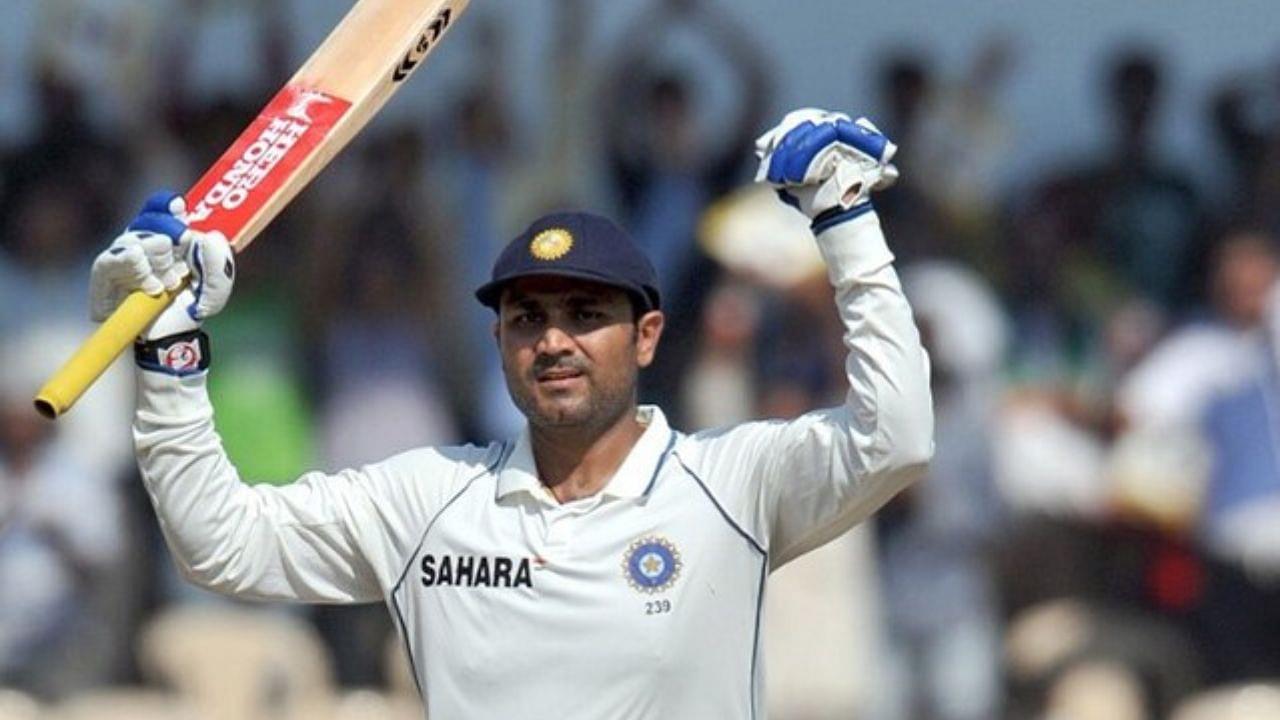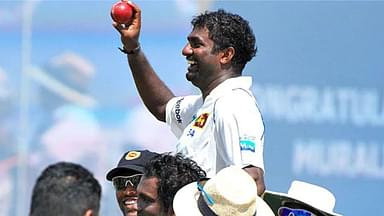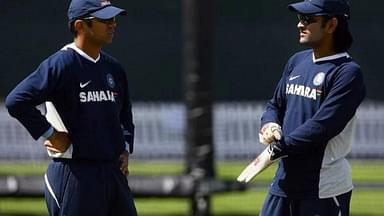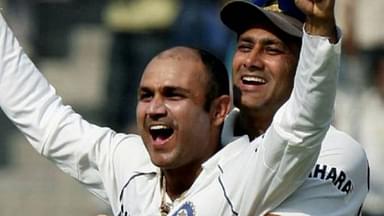During the third Test match of Sri Lanka’s tour of India 2009, India’s former opening batter Virender Sehwag had a wonderful opportunity to score his third triple century in the format, but an apparent rational advise from the legendary Rahul Dravid at the other end did not help him in the cause eventually. Resultantly, the right-handed batter was stranded seven runs short of scripting history.
Advertisement
Mumbai’s Brabourne Stadium was not only hosting its last Test, but also the first after a 36-year-gap. Sri Lanka had been bowled out on 393 by the morning session of Day 2. Batting in his usual aggressive fashion, Sehwag had went past his individual score of 150 by Tea, with Dravid partnering him at the other end at 17*.
A total of 34 overs were bowled in the final session, and India’s scorecard read a mammoth 443/1 after 79 overs. While Sehwag was 16 runs short of a triple century, Dravid had also smashed a half-century.
Virender Sehwag Would’ve Scored 3rd Test Triple Century If Not For Rahul Dravid’s Suggestion
On the brink of a record-breaking feat, Sehwag would’ve been the first-ever cricketer to have scored three Test triple centuries. Had it arrived by the end of Day 2, he would have broken a couple of other records as well. However, Dravid’s advise during the fag end of the day, as admitted by Sehwag, prevented him from achieving the same.
During an interaction with popular YouTuber Vikram Sathaye almost six years ago, the ‘Nawab of Najafgarh’ revealed that Dravid had come up with a suggestion that they should not throw their wickets away with only three overs left in the day’s play. With a triple ton at sight, he was of the view that if Sehwag played out this tricky period, then he could even go on to score a quadruple century on Day 3.
While Sehwag did pay heed to the advise of his former captain, he regretted it for having curbed his natural hitting instincts looking back to that day.
“The reason I remained not out on 284* that day is only because Rahul Dravid had told me that since only 3-4 overs are left in the day, you play this period out. Imagine arriving here tomorrow and with three days still left in the Test, you could score 400, or even 500! I agreed, and told him that if you wish I remain not out, then you play these three overs. I was thinking afterwards, that if I had managed to not abide by Dravid’s suggestion, I would have perhaps made those 16 runs within three overs and scored that triple hundred!”
It is worth of a mention that Sehwag had scored his 284th run during the final over of Day 2. The last three overs of that day yielded seven runs off his bat after facing six deliveries.
Had he smashed a triple ton that day itself, he would have become only the second batter (after Don Bradman) to have scored a triple century in a single day. Also, he would have broken his own record of scoring the fastest Test triple century.
That being said, Sehwag (293) was dismissed caught and bowled off legendary Muttiah Muralitharan in the first session of the third day. Aarti Sehwag (Virender Sehwag’s wife) hilariously confronted Muralitharan after the end of day’s play, and embarrassed the latter by asking him the reason for taking her husband’s catch!
How Had Virender Sehwag Completed First Two Test Triple Centuries?
Sehwag had become India’s first triple centurion during the 2003 Multan Test against Pakistan. Four years later, in March 2008, he smashed another Test triple hundred against South Africa in Chennai.
Batting on 295* during the Multan Test, Sehwag famously hit former Pakistan off-spinner Saqlain Mushtaq for a six over deep mid-wicket to achieve the unprecedented milestone for an Indian. On the other hand, he nonchalantly flicked a full delivery bowled by Makhaya Ntini towards square leg for a single to become the only Indian batter (till date) to register two Test triple tons.
As the story goes, an ever-confident Sehwag was adamant to reach the triple century mark during the Multan Test by hitting a six off Mushtaq, about which he had already communicated to the legendary Sachin Tendulkar at the other end. As expected, Tendulkar (akin Dravid) came up with a rational suggestion for him to not let go of a wonderful opportunity of being part of history by going for an unwanted glory moment.
“When I reached 295, I said ‘If Saqlain comes on, I’m going to step out and hit him for a six first ball’. Sachin said: ‘Are you mad? You’ll be the first [India] player to 300’. I said ‘No one’s hit 295 also, I’ve become the first one already’,” remarked Sehwag during an episode of Breakfast with Champions a couple of months ago.
Apart from Sehwag, only Karun Nair (303*) is the other Indian batter to have scored a Test triple ton. Batting only for the third time in Test cricket, Nair had played a mammoth knock against England at the MA Chidambaram Stadium in 2016.






